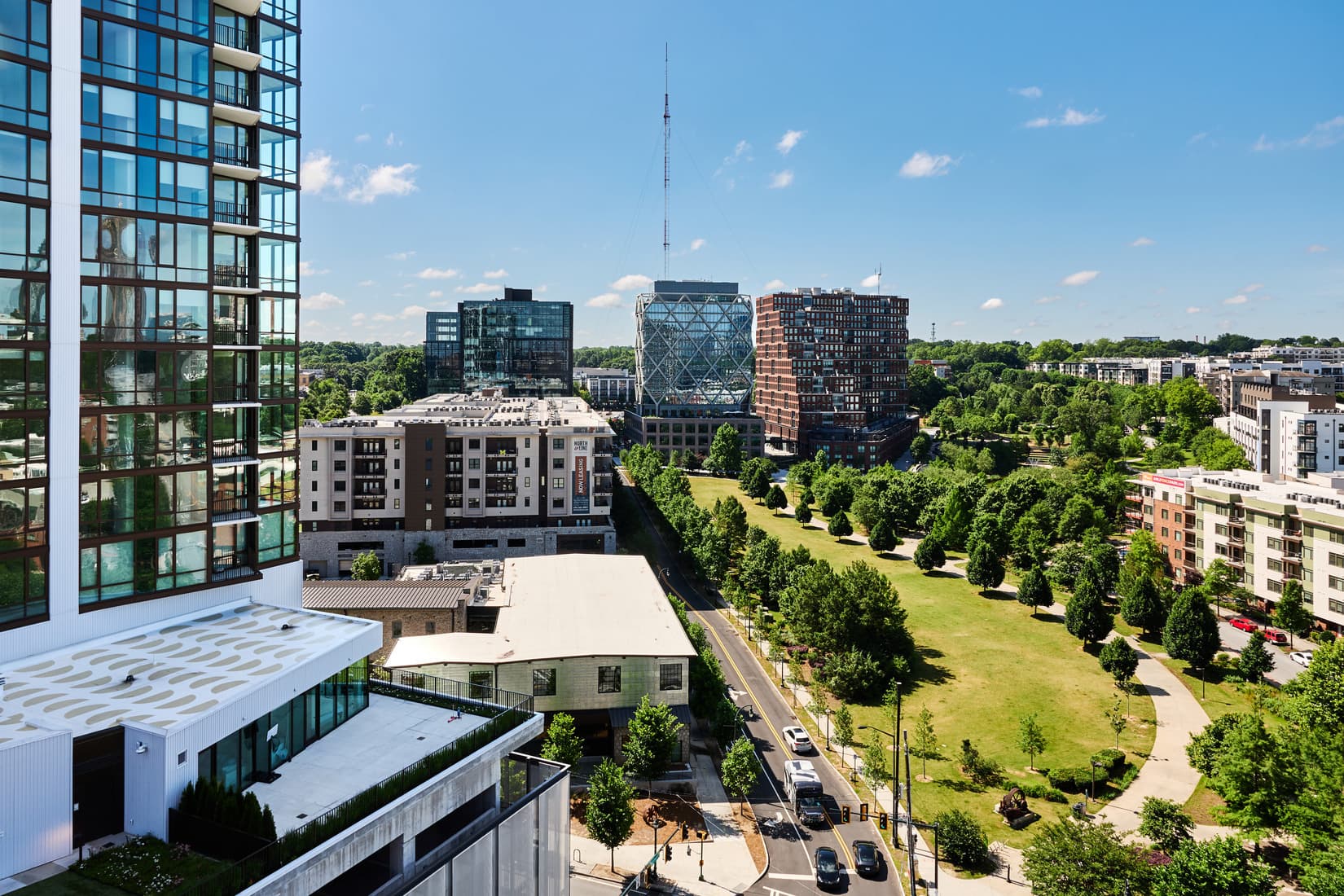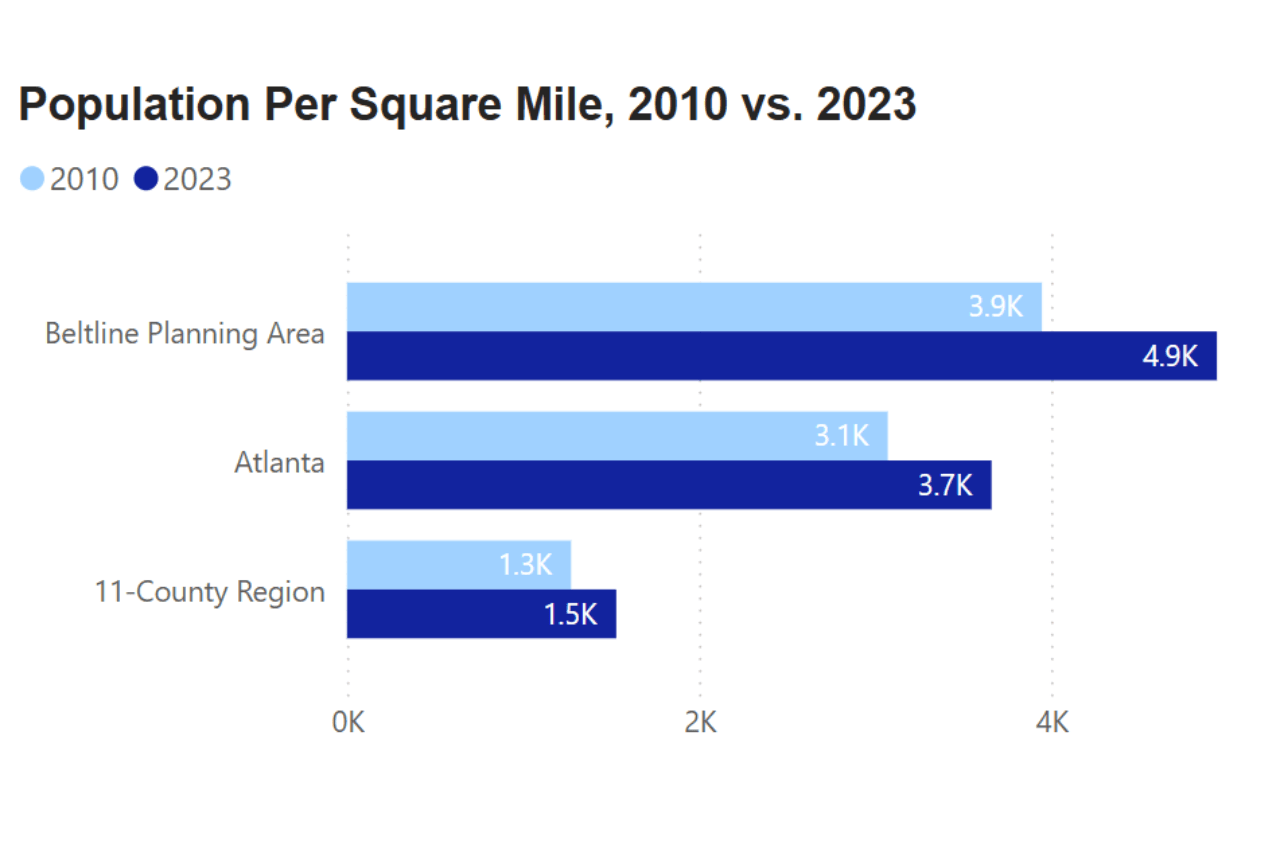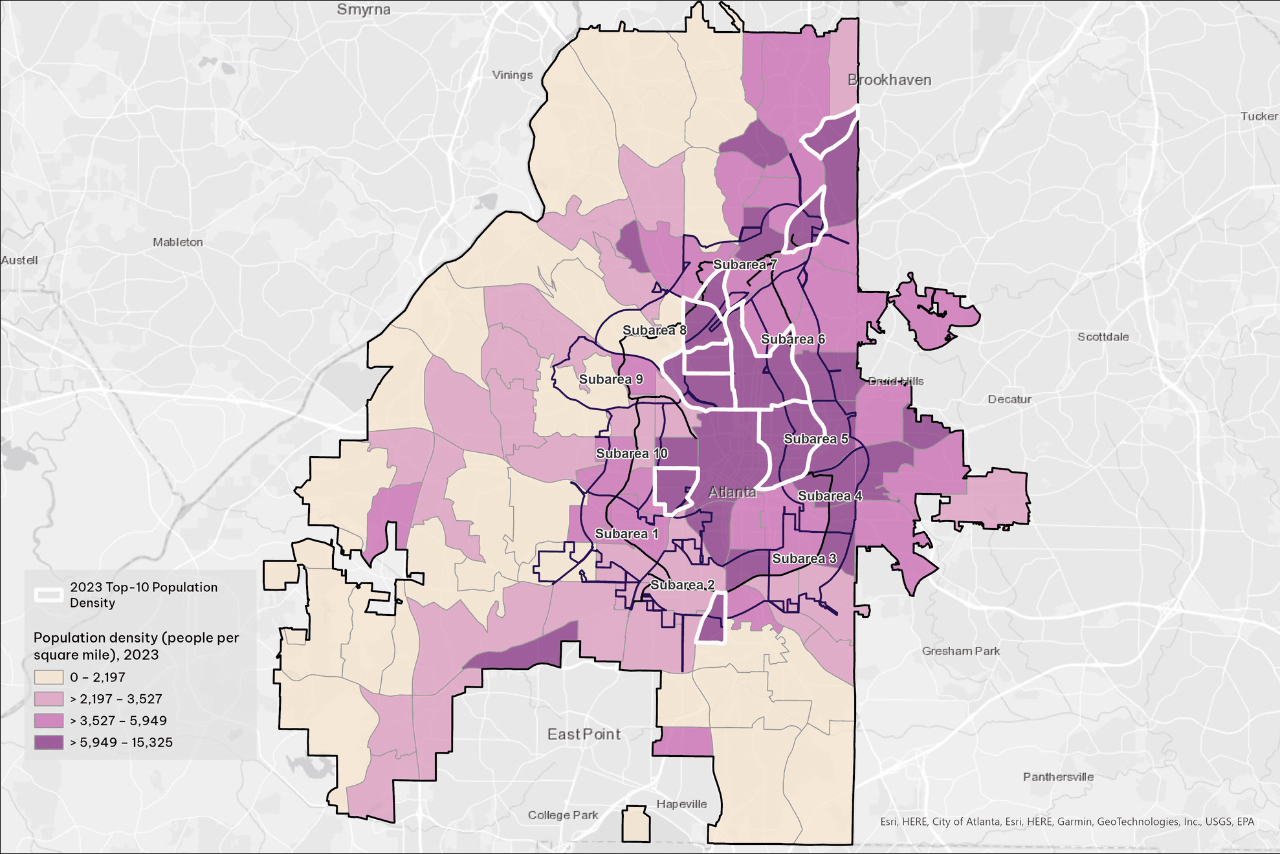Trailblazing Progress: Tracking the Beltline's Effects on Atlanta's Population Growth from 2010-2023
Learn more about the Beltline's effects on Atlanta's population growth.
- Data

Atlanta has long been counted among the country’s largest and fastest-growing metros. Just last year, US Census estimates showed about a half million residents live inside the city limits — no small feat given that the city had spent several decades in the 400,000s even as the metro area surged.
It’s no secret that one of the most visible locations for growth is around the Atlanta Beltline — and the numbers back it up.
Big (population) data, 2010 vs. 2023
Between 2010 and 2023, the City of Atlanta added about 80,000 new residents*, a 19% increase (chart below). If we zoom in on the half-mile area surrounding the Beltline, known as the Beltline Planning Area, we can see even more intense change: Its 24,000 new residents represent a 25% growth in population. That’s also ahead of the 20% growth seen across Metro Atlanta’s 11 core counties.
While population numbers are helpful for understanding pure growth, their disadvantage is that a large space always has more people than a smaller space. (Just imagine what a chart might look like if we compared the entire metro area’s 5+ million people to the Beltline’s 119,000.) This makes it more challenging to see the magnitude of change. Plus, it’s hard to see what the change means at smaller geographies, like Atlanta’s neighborhoods. To understand that, we look at population density — the number of people per square mile.
Increased density in the urban core
Atlanta and the Beltline Planning Area have always had an edge when it comes to population density in the region. Even in 2010, there were more people per square mile around the Beltline than citywide or in the 11 core counties. Fast forward to 2023, and we can see density around the Beltline outpaced the city and region.
If we look across the city, we can see that some of Atlanta’s densest neighborhoods** are clustered along or near the Beltline (map below). For example, Midtown, which borders the northeast corridor, now boasts more than 15,000 people per square mile, making it the most densely populated area in the city.
This pattern reflects a powerful shift in how and where people want to live: closer to the core, connected to trails, transit, and opportunities.
Part of a nationwide urban resurgence
Atlanta’s growth is part of a broader national trend: Americans are moving back to city centers after decades of suburban sprawl. Where once white flight and disinvestment hollowed out urban areas, we see renewed demand for walkable, vibrant, mixed-use neighborhoods.
While the Beltline didn’t cause this movement, it did shape how the shift manifested in Atlanta. Through strategic planning 20 years ago, the Beltline created space for new housing, workplaces, and gathering spaces, all connected along the corridor.
When managed well, population growth and density like what we see around the Beltline are signs of a healthy, thriving city. Greater density brings a more robust mix of people, jobs, businesses, and amenities, and makes city services more efficient — reaching more people in less time and at lower cost. It also can enhance public safety and community interaction through the “eyes on the street” philosophy first proposed by renowned urbanist Jane Jacobs.
What’s next: balanced growth
Today, it’s not just about building for growth, it’s about building with purpose. As the city and the Beltline continue to evolve, the challenge is to:
Preserve the homes and businesses of legacy residents.
Encourage inclusive development that welcomes newcomers.
Support a resilient mix of incomes, cultures, and uses.
Growth isn’t the end goal. Equitable growth is.
Source (throughout): 2006-2010 and 2019-2023 American Community Survey five-year rolling averages, processed by the Atlanta Regional Commission.
Data Notes:
*To reduce error in our estimates, we use American Community Survey (ACS) five-year rolling averages for Beltline geographies. To ensure quality comparisons, we’ve used that same data source for city and metro figures. That’s why the chart, for instance, says the city has 499,000 residents whereas other sources use a one-year ACS estimate of 510,000. The five-year averages tend to be more conservative, especially when measuring change, than the one-year estimates.
**Neighborhoods references Neighborhood Statistical Areas, which sometimes bring together multiple City of Atlanta neighborhoods to create a geography that can produce sound statistics.


